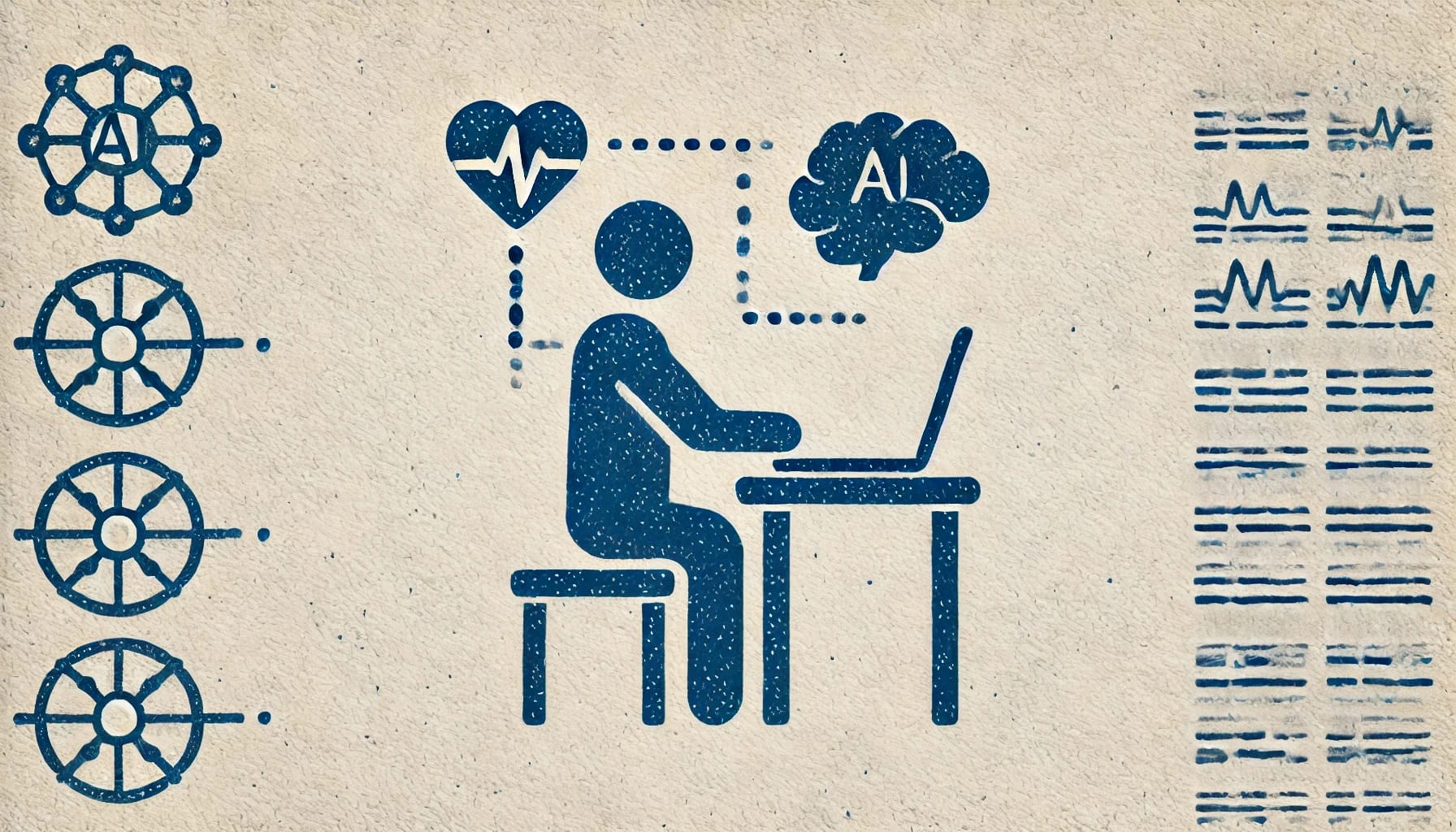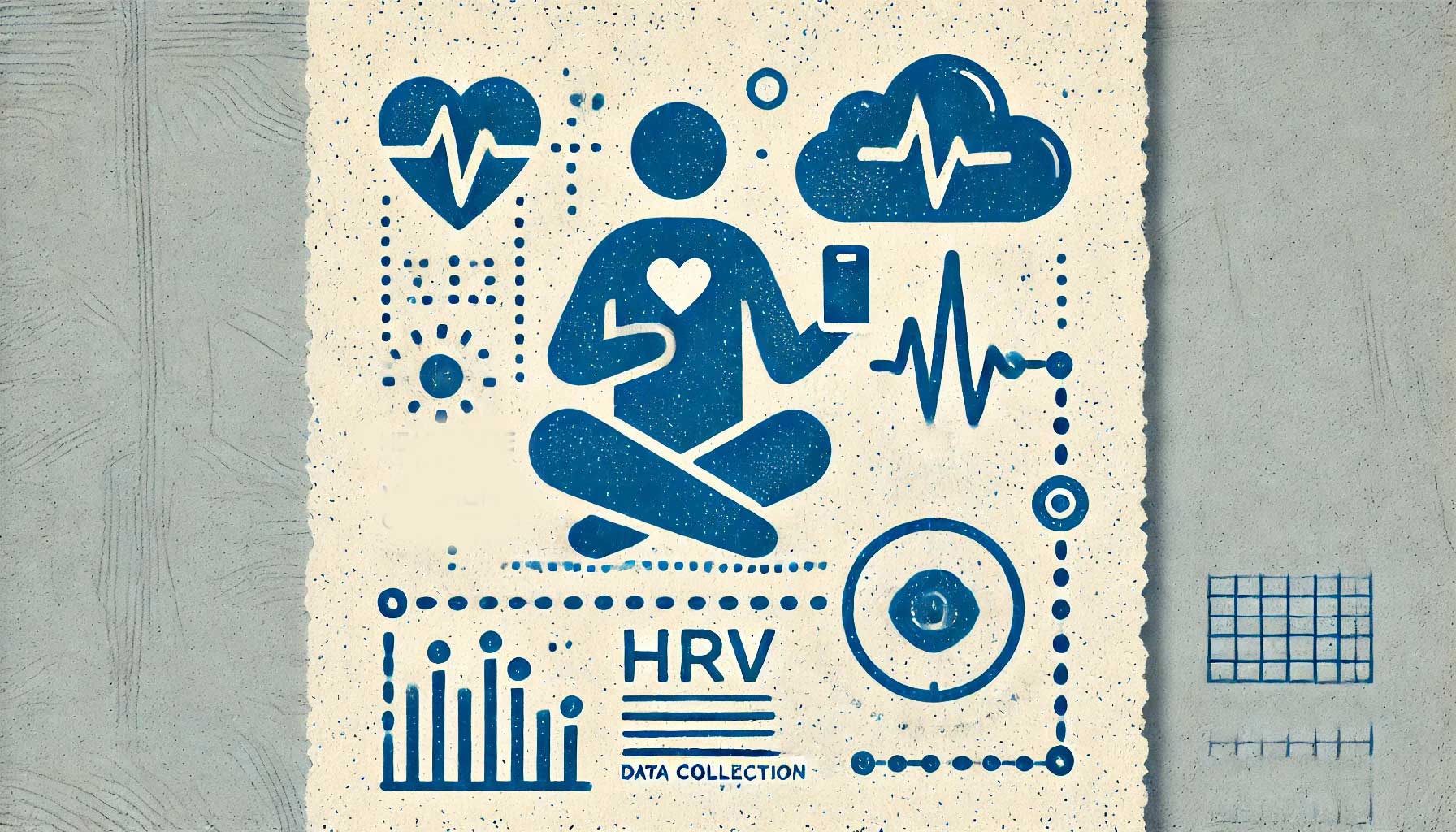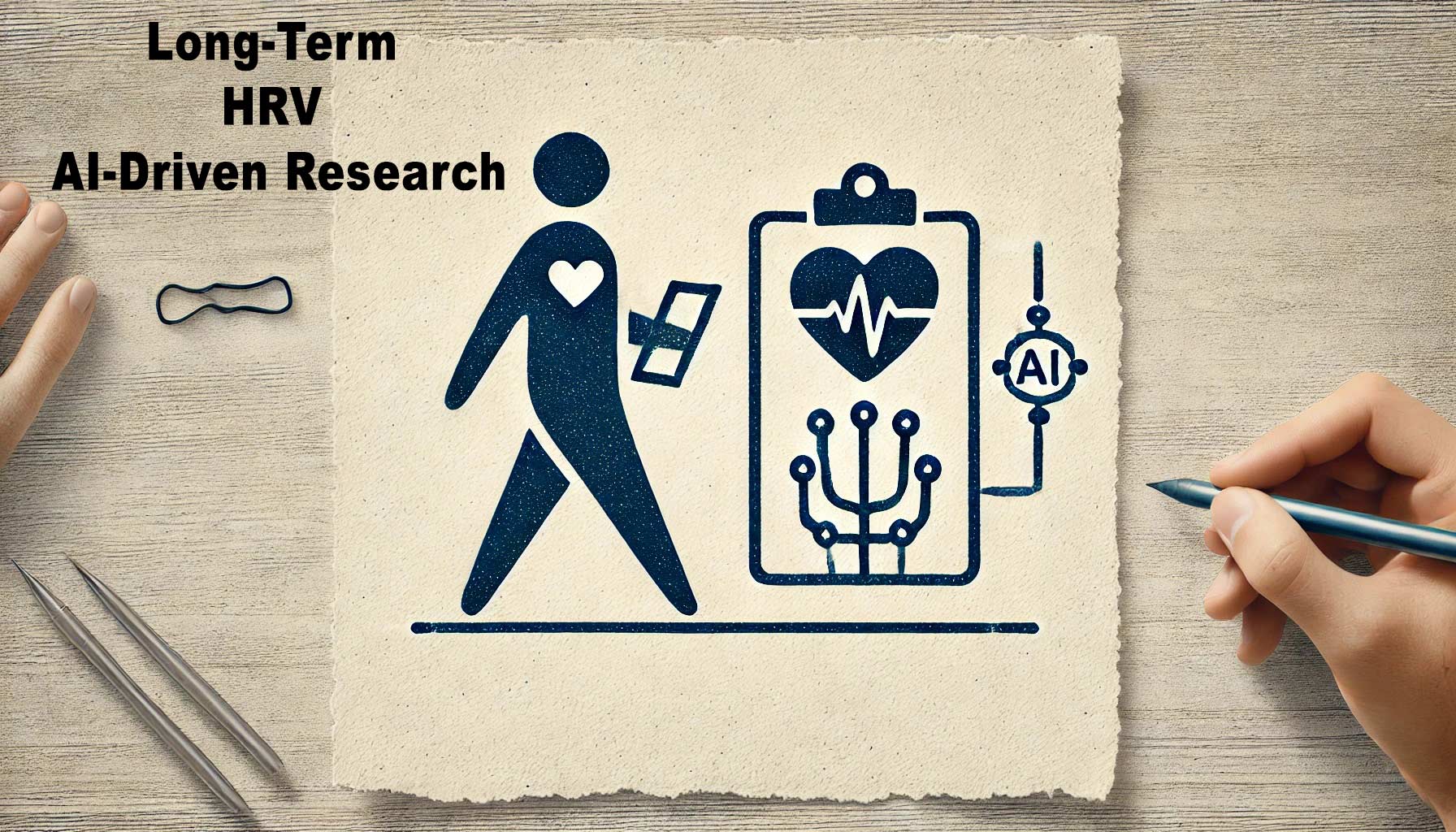Introduction
Artificial Intelligence (AI) is transforming how we analyze Heart Rate Variability (HRV) data, offering deeper insights into our autonomic nervous system and overall health. But to unlock AI’s full potential, researchers need to design studies that collect long-term HRV data specifically for AI-driven analysis. This means structuring data collection in a way that maximizes its utility for machine learning models and other AI tools.
In this article, we’ll discuss best practices for designing long-term HRV data collection that supports AI research. From setting clear research objectives to ensuring high-quality data, we’ll cover the essentials that will help you optimize your study design for AI.

Key Considerations for AI-Optimized HRV Data Collection
1. Defining Research Objectives with AI in Mind
Start with clear goals. When AI is part of your analysis plan, your research objectives should align with what AI does best – like recognizing patterns or making predictions. For example, if you aim to predict cardiovascular events, collect HRV data over timeframes that are most likely to reveal relevant patterns. Or if your focus is on stress response, consider collecting data during periods of known stress, such as before sleep or after exercise.
2. Participant Selection and Recruitment
- Inclusion and Exclusion Criteria: Your data is only as good as your participants. Establishing solid inclusion and exclusion criteria ensures you’re gathering a diverse dataset that AI can effectively analyze. When designing your study, think about how factors like age, health status, and lifestyle might influence HRV and, subsequently, your AI model’s performance.
Avoiding Bias: Be mindful of potential biases. If your study includes a narrow demographic, your AI model might struggle when applied to different populations. Consider how you can balance participant selection to make your data more representative.
- Sample Size Considerations: In AI research, more data usually means better results. But collecting large datasets in long-term HRV studies can be challenging. AI can help determine the minimum sample size needed to produce statistically significant results, making your study both efficient and effective.

3. Structuring Data Collection for AI Analysis
- Ensuring Data Quality: Quality data is the backbone of AI analysis. To get the most out of your AI tools, you need to collect HRV data that’s accurate, consistent, and well-organized. Start by choosing wearable devices that offer high precision and reliability. Look for devices that minimize noise and artifacts, which can confuse AI models. Consistency is key – standardize the data format and ensure that all participants follow the same protocols.
- Frequency and Duration of Data Collection: How often you collect data and for how long can significantly impact AI’s ability to detect meaningful patterns. Continuous monitoring offers the most comprehensive view, capturing every fluctuation in HRV. However, periodic monitoring can be effective if strategically timed around key events, such as physical activity or sleep. Decide on the frequency and duration based on your study’s goals and the specific AI models you plan to use.
4. Preparing HRV Data for AI Analysis
- Data Preprocessing for AI: Before feeding your HRV data into an AI model, it’s essential to preprocess it. This step involves cleaning the data – removing noise, correcting errors, and filling in any gaps. AI tools can assist in this process by identifying outliers or inconsistent data points. Preprocessing also includes normalizing the data to ensure that it’s in a format suitable for AI analysis.
- Integrating Additional Data Streams: AI thrives on data, and the more context you provide, the better. Consider integrating additional data streams, such as physical activity, sleep patterns, or environmental factors, alongside your HRV data. These extra layers of information can help AI models identify more complex patterns and deliver more nuanced insights. Ensure that these data streams are synchronized and formatted in a way that allows for seamless integration with your HRV data.
- Data Annotation and Labeling: Accurate annotation and labeling are crucial for training AI models. If you’re looking to predict specific outcomes, such as stress levels or cardiovascular events, you’ll need to label your HRV data accordingly. This can be done manually or through automated methods, depending on the size and complexity of your dataset. Proper labeling helps AI models learn more effectively, improving their accuracy and predictive power.

5. Ethical and Practical Considerations
- Ethical Implications of AI-Driven HRV Research: As AI becomes more integrated into HRV research, ethical considerations become increasingly important. Data privacy is a major concern, especially when collecting long-term HRV data that could reveal sensitive health information. It’s crucial to obtain informed consent from participants, clearly explaining how their data will be used, stored, and analyzed. Ensure compliance with data protection regulations such as HIPPA or GDPR, and consider using anonymization techniques to protect participant identities. Transparency is another ethical imperative. Participants and stakeholders should understand how AI models are making decisions based on HRV data. This transparency not only builds trust but also helps ensure that the AI tools are being used responsibly.
- Practical Challenges in AI-Driven Data Collection: Maintaining participant compliance over the long term can be challenging, but AI can help here too. Automated reminders and feedback systems can keep participants engaged by showing them how their data contributes to the study and offering insights into their health. Additionally, AI can monitor data collection in real-time, flagging potential issues like device malfunctions or missed data points, allowing researchers to address them promptly. Managing large datasets over extended periods also presents practical challenges. AI can automate many aspects of data management, from storage and retrieval to the application of security measures such as encryption. This reduces the risk of data loss or corruption and ensures that the data remains accessible and secure throughout the study.
Conclusion
Designing long-term HRV data collection with AI in mind is essential for maximizing the potential of AI-driven research. By carefully considering your research objectives, participant selection, and data collection methods, you can ensure that your data is primed for effective AI analysis. Addressing ethical and practical challenges head-on will further enhance the quality and impact of your research.
As AI continues to evolve, so too will its applications in HRV research. By staying informed of best practices and integrating AI into every stage of your study design, you can push the boundaries of what’s possible in health research, unlocking deeper insights into the human body’s complex rhythms.
Call to Action
📅 If you want to learn more about Fibion’s solution for measuring HRV, do not hesitate to book a video call with our expert Dr. Miriam Cabrita.

🔍 You may also discover other valid and reliable products in our portfolio, such as the Fibion Research, Fibion Vitals, Fibion Sleep, Fibion Sens, Fibion Emfit, and Fibion Circadian, all designed to assist in research measuring physical activity, sedentary behavior, and sleep.
✨ For those interested in an in-depth look at the features and pricing across available heart rate variability (HRV) actigraphy tools, we invite you to explore our comprehensive comparison sheet. Click here for access.
Frequently asked questions about this topic:
Why is designing HRV data collection important for AI research? +
Properly designing HRV data collection ensures the data is high quality, comprehensive, and well-structured, maximizing its utility for AI analysis. This is crucial for developing accurate and reliable AI models in health research.
What should researchers consider when defining HRV study objectives for AI? +
Researchers should align their objectives with AI’s strengths, such as pattern recognition or prediction. For example, to predict cardiovascular events, collect HRV data over relevant periods to capture patterns indicative of such events.
How can data quality be ensured for AI-driven HRV analysis? +
To ensure high data quality, use reliable wearable devices that minimize noise and artifacts, standardize data collection protocols, and implement robust preprocessing techniques like noise removal and data normalization.
Why is integrating additional data streams with HRV important for AI analysis? +
Integrating additional data streams (e.g., physical activity, sleep, environmental factors) provides context for AI models, allowing for the identification of complex patterns and delivering more nuanced insights.
What ethical considerations should be addressed in AI-driven HRV research? +
Ethical considerations include data privacy, informed consent, transparency in AI model use, and compliance with regulations like GDPR. Using anonymization and clear communication can help mitigate ethical risks.
How can AI assist in maintaining participant compliance in long-term HRV studies? +
AI can help maintain compliance through automated reminders, feedback systems, and real-time monitoring of data collection. It can flag issues like device malfunctions or missed data points for timely intervention.















